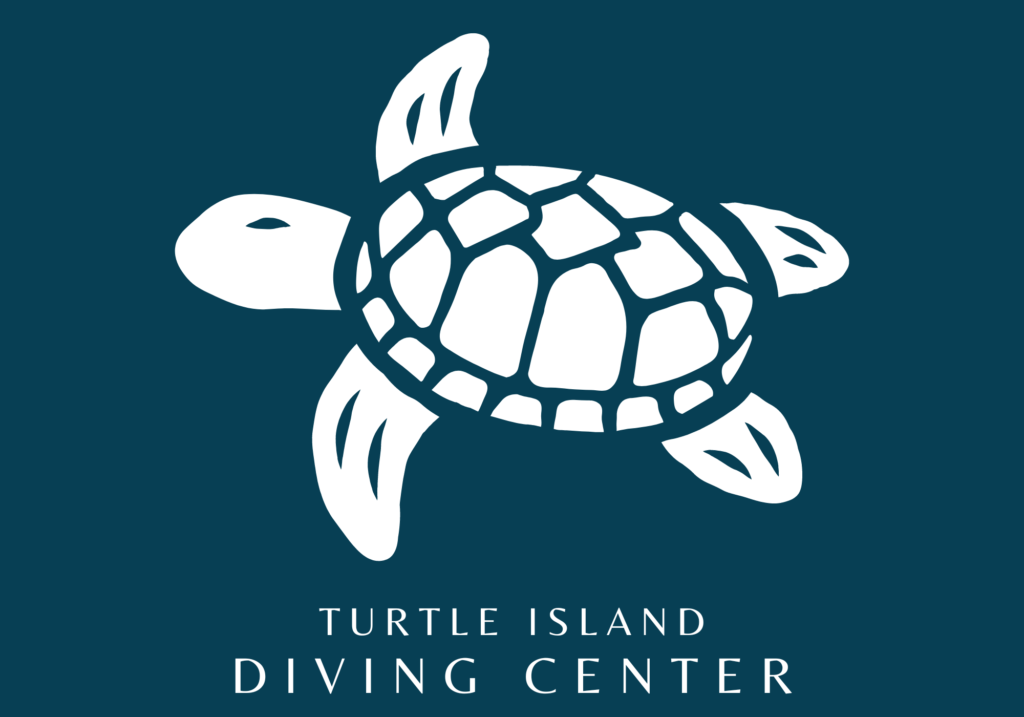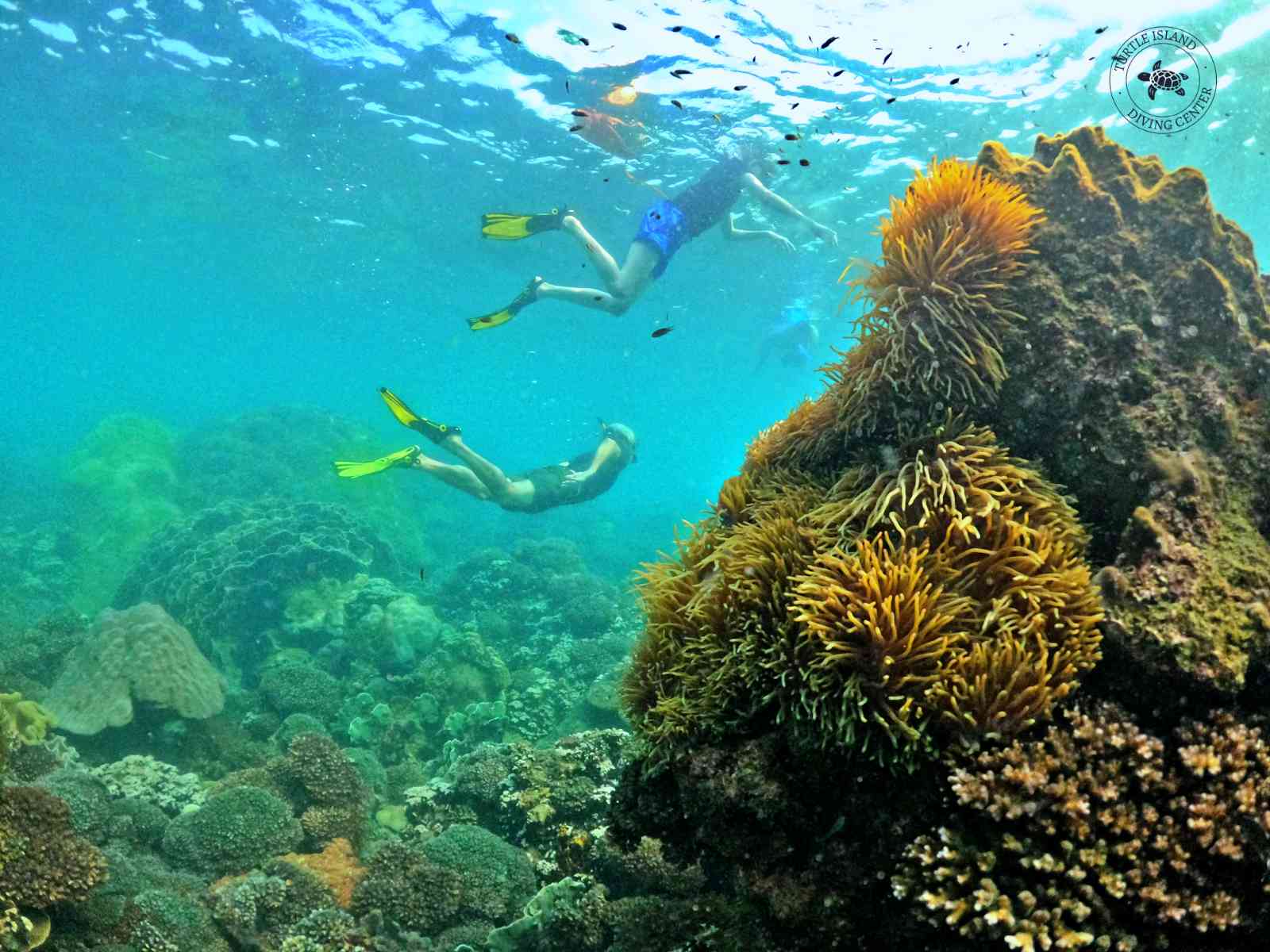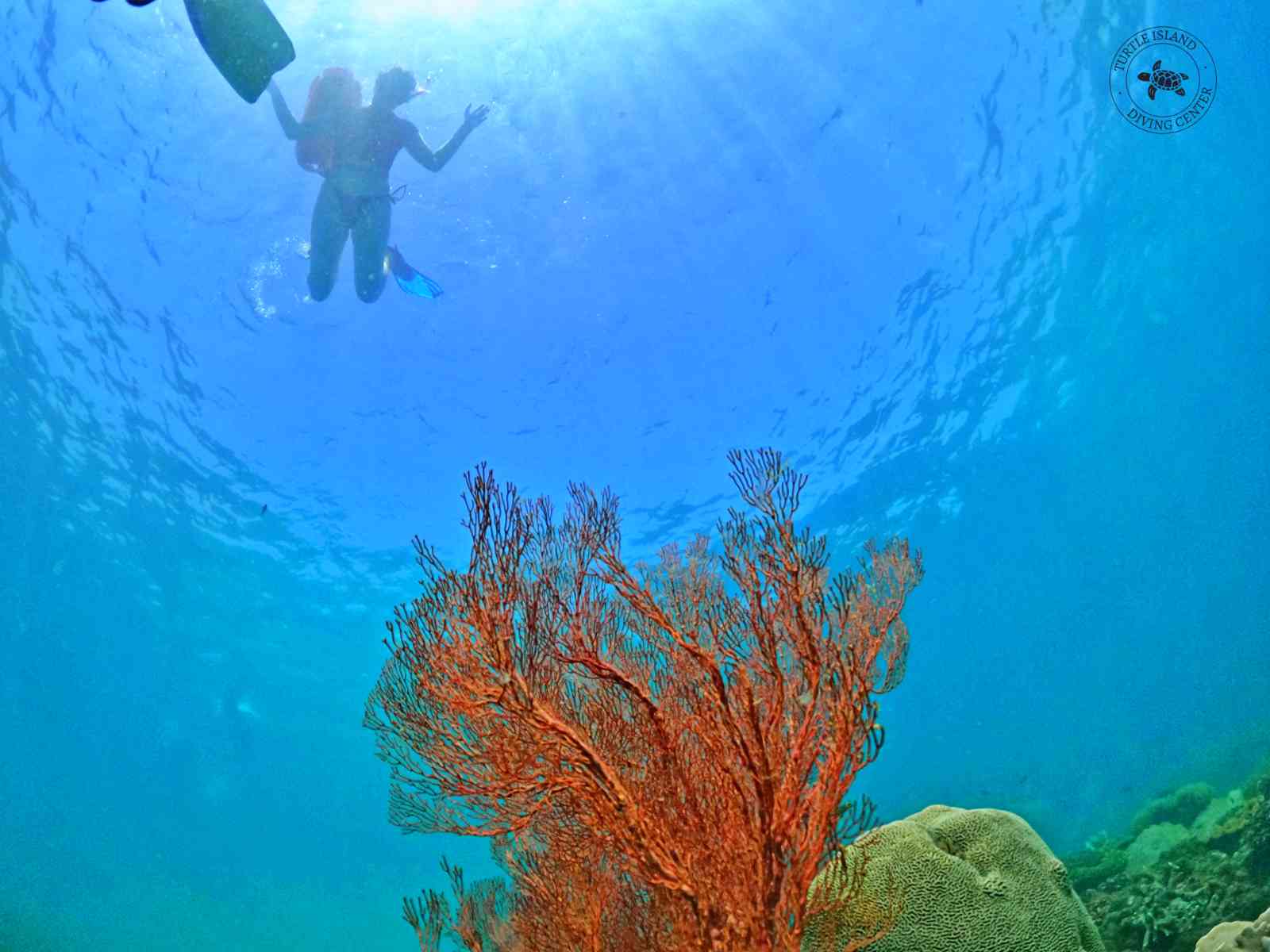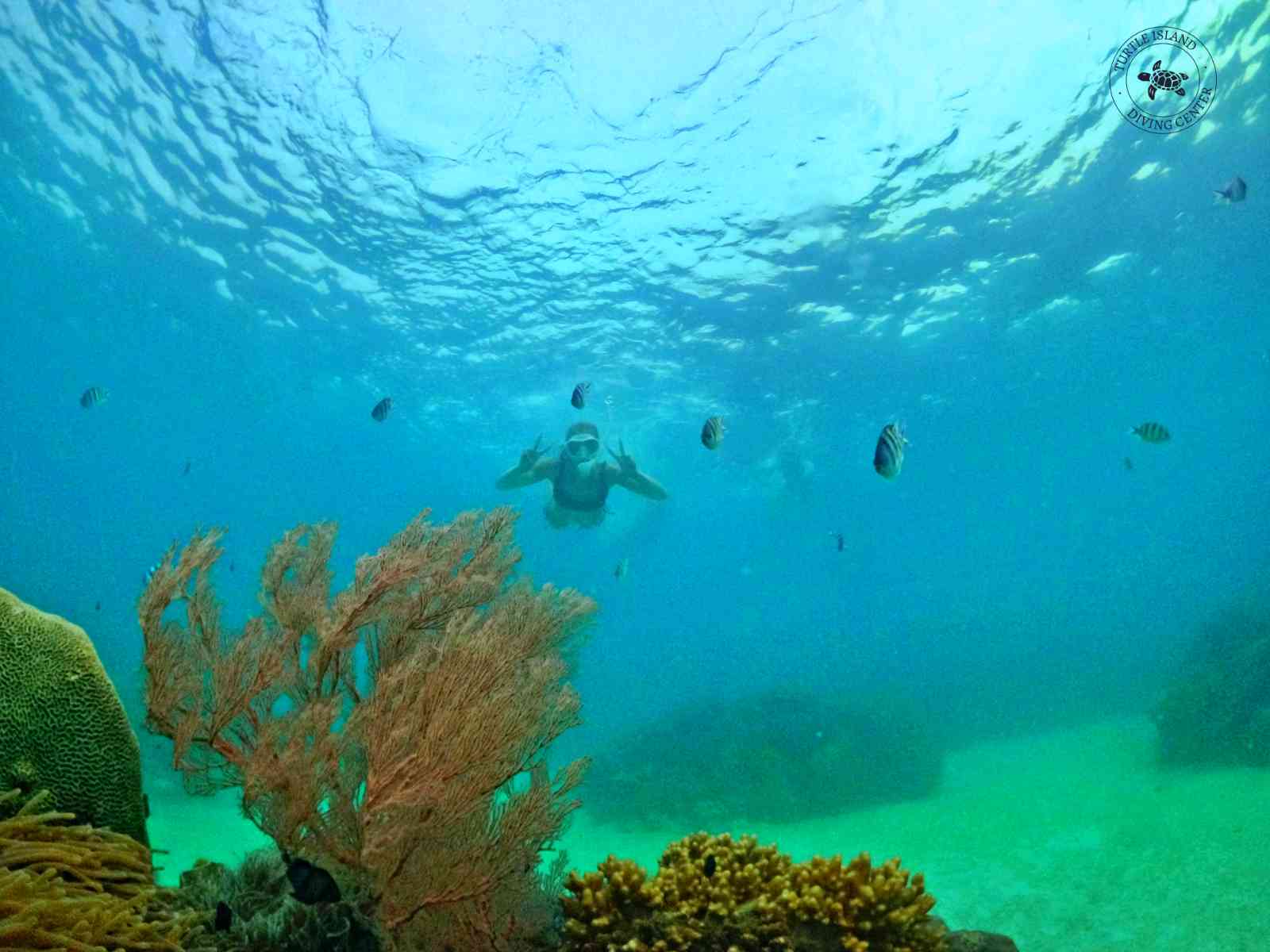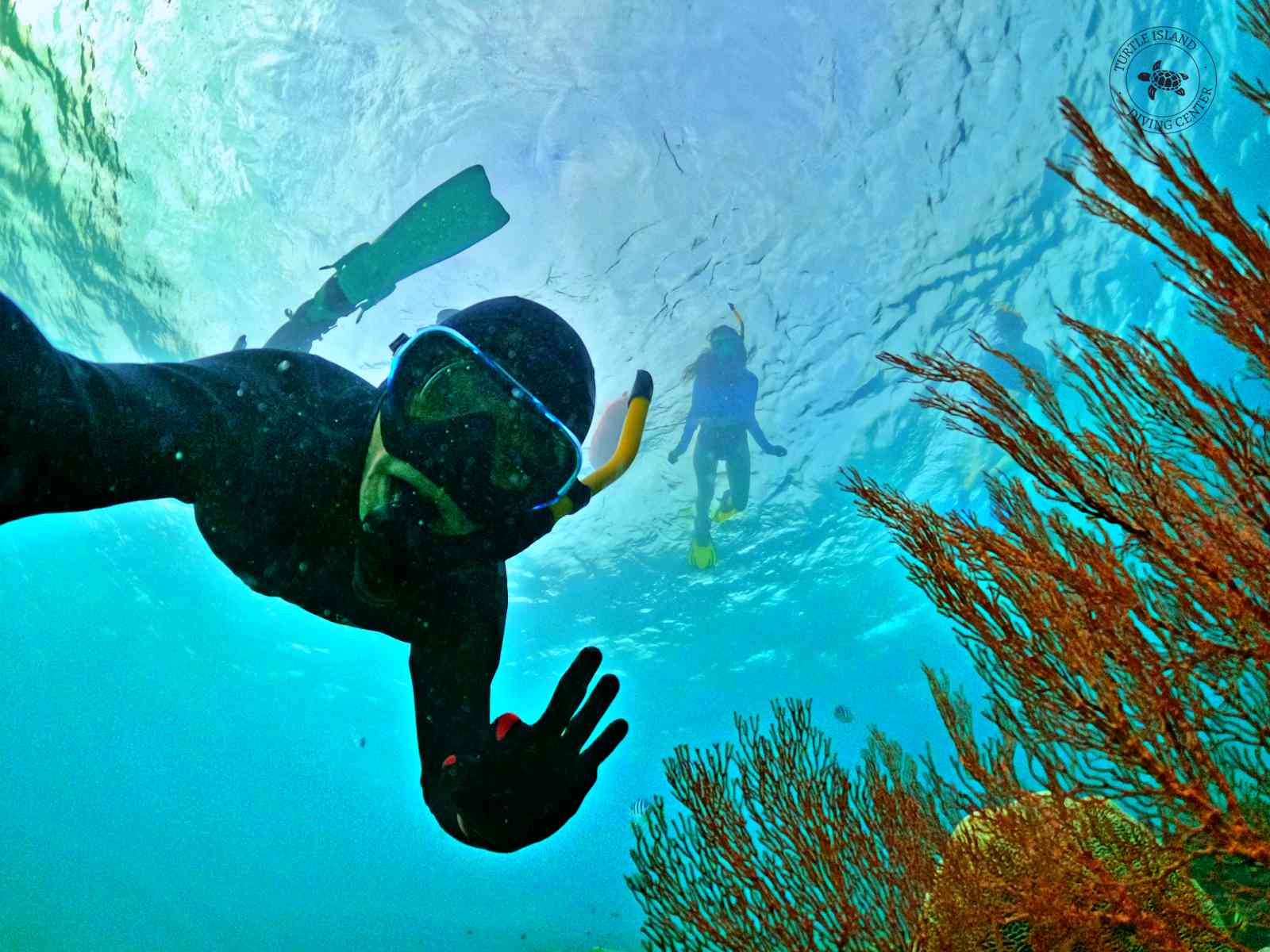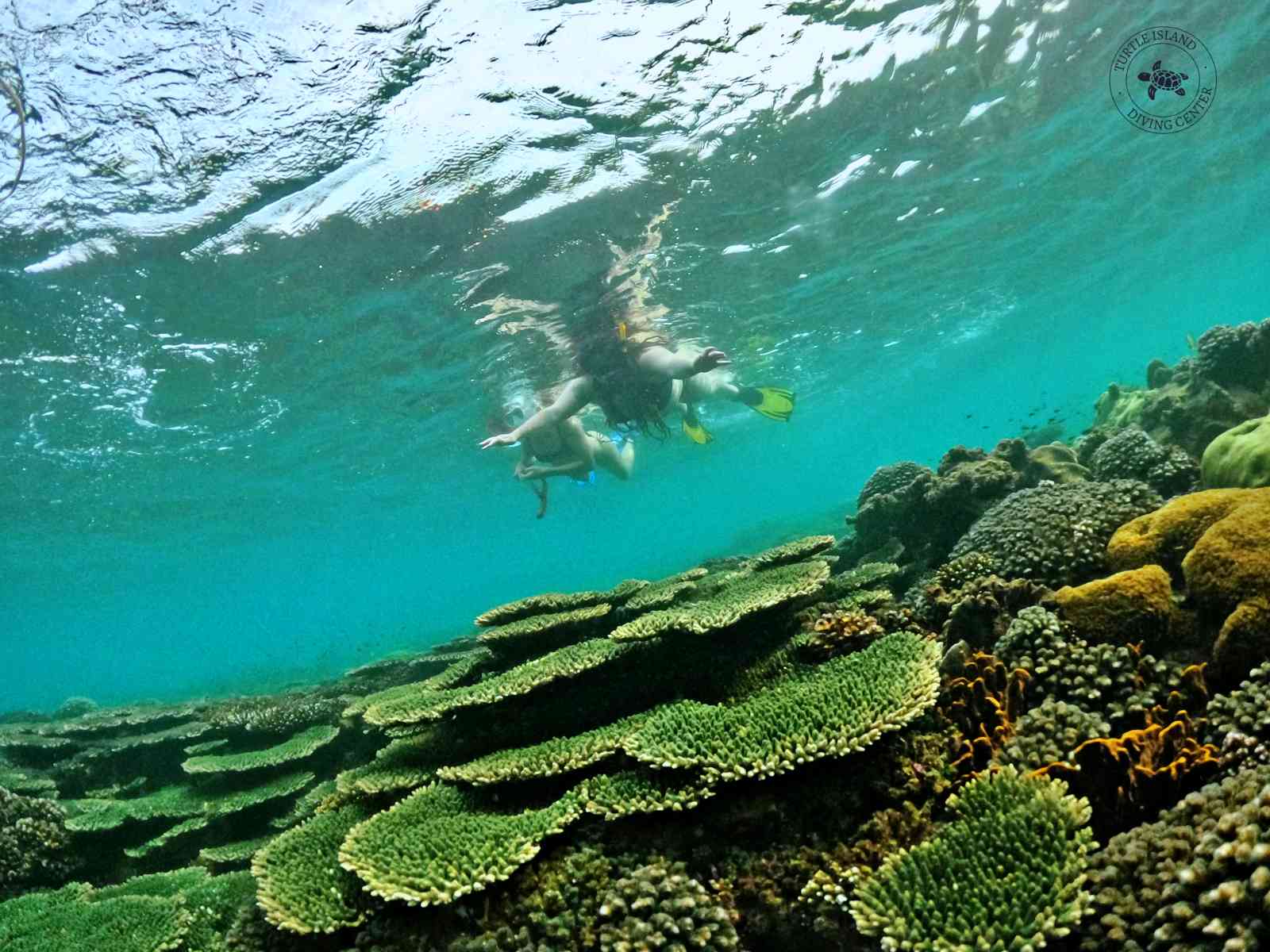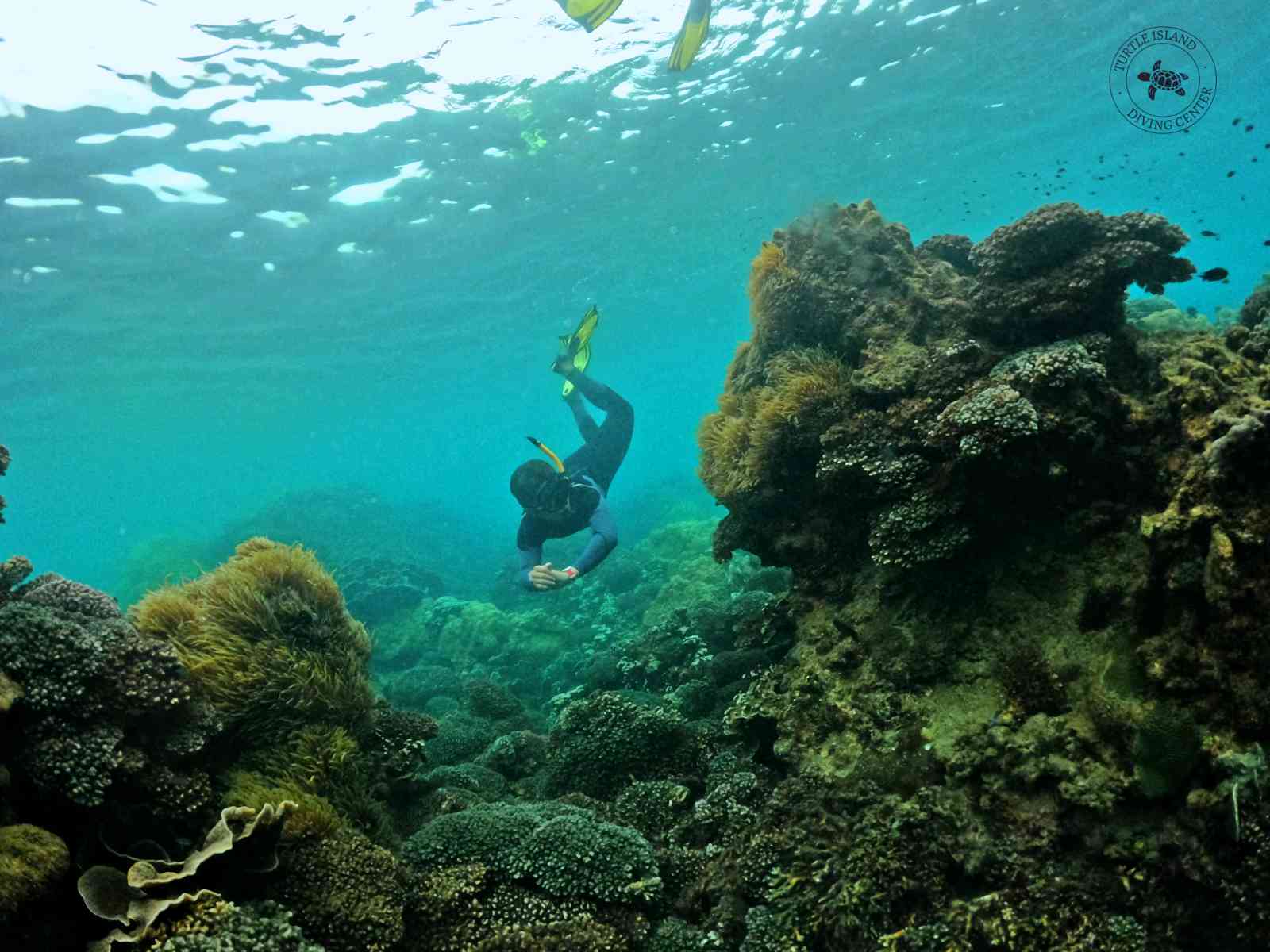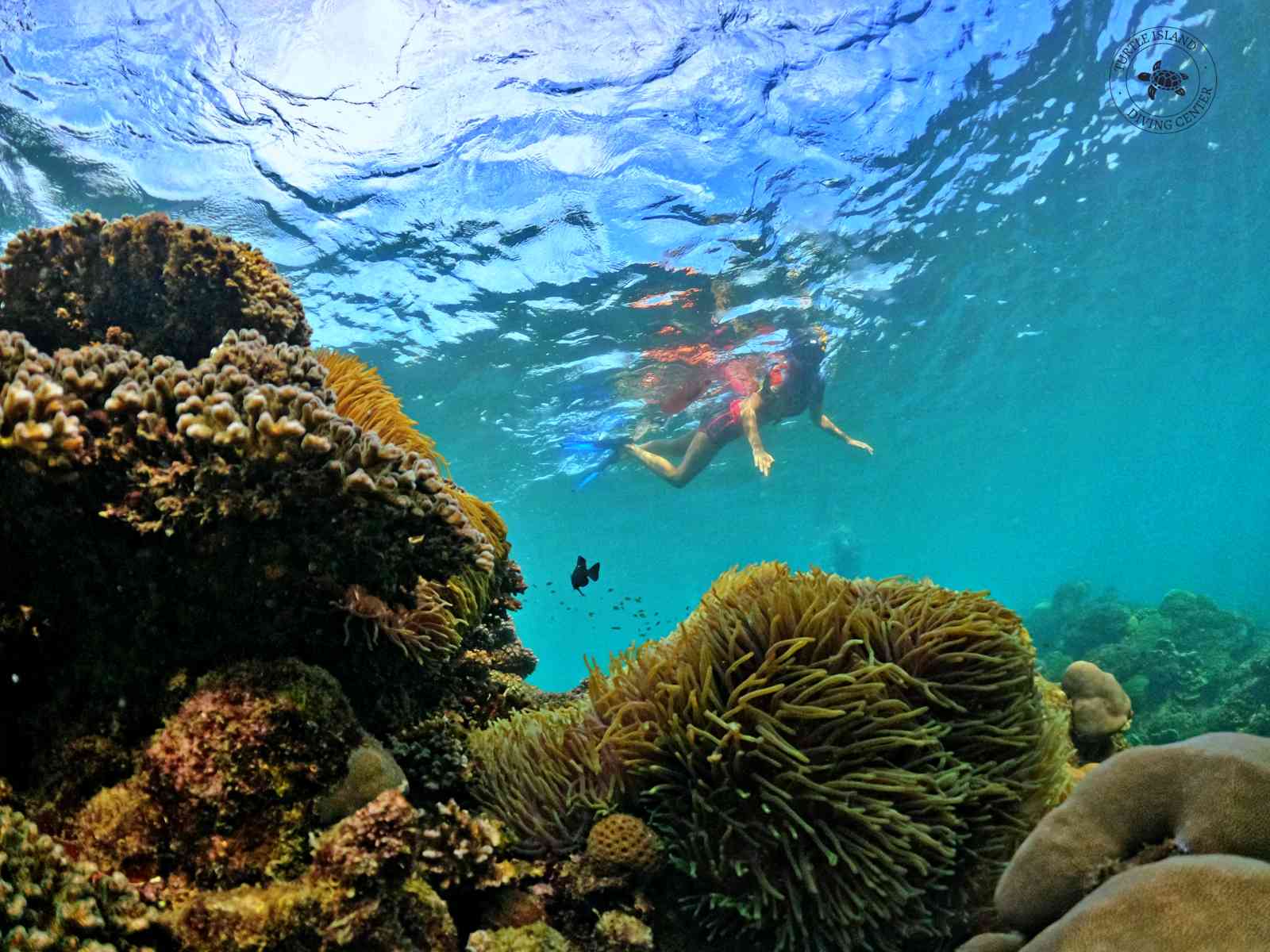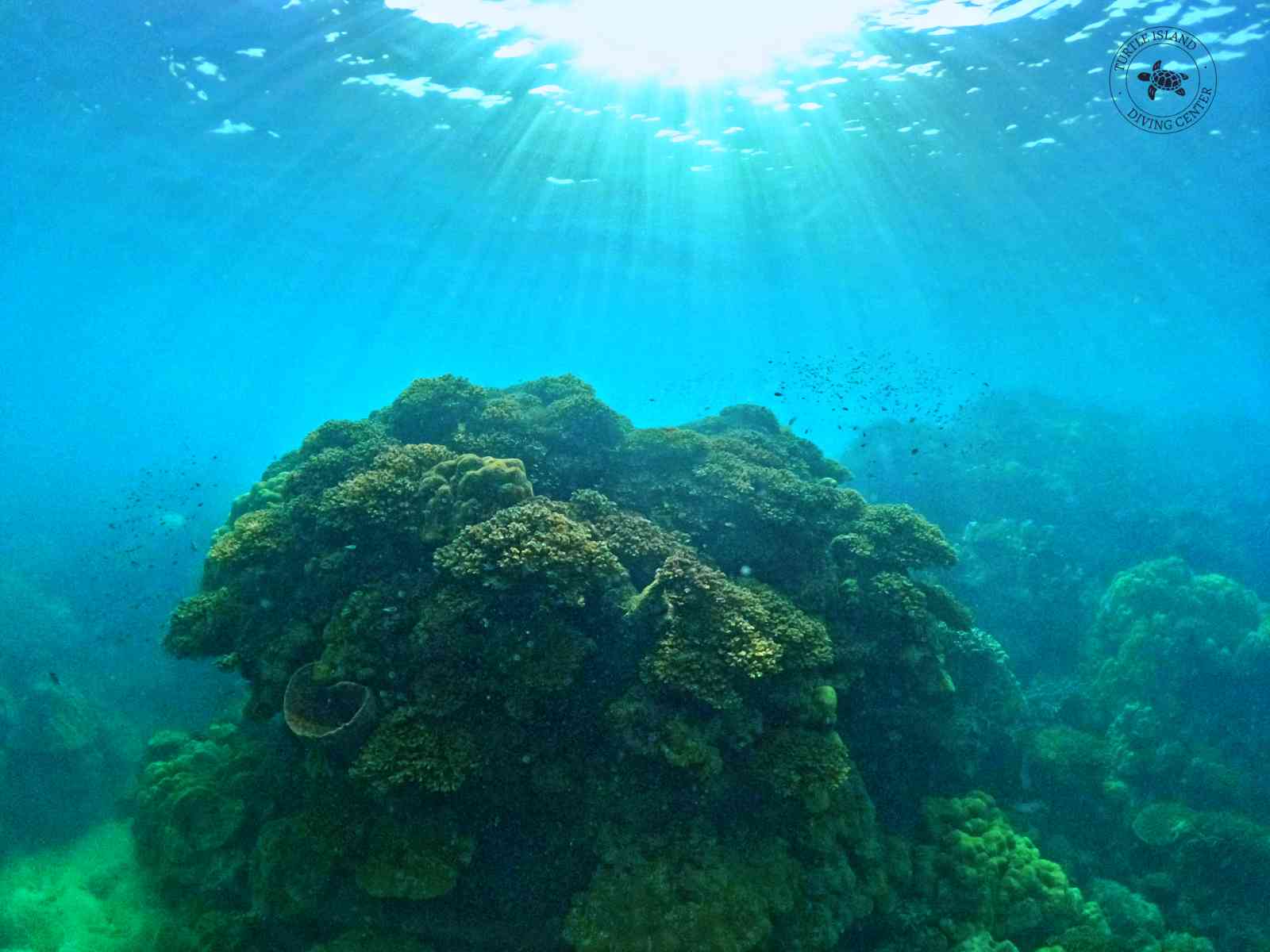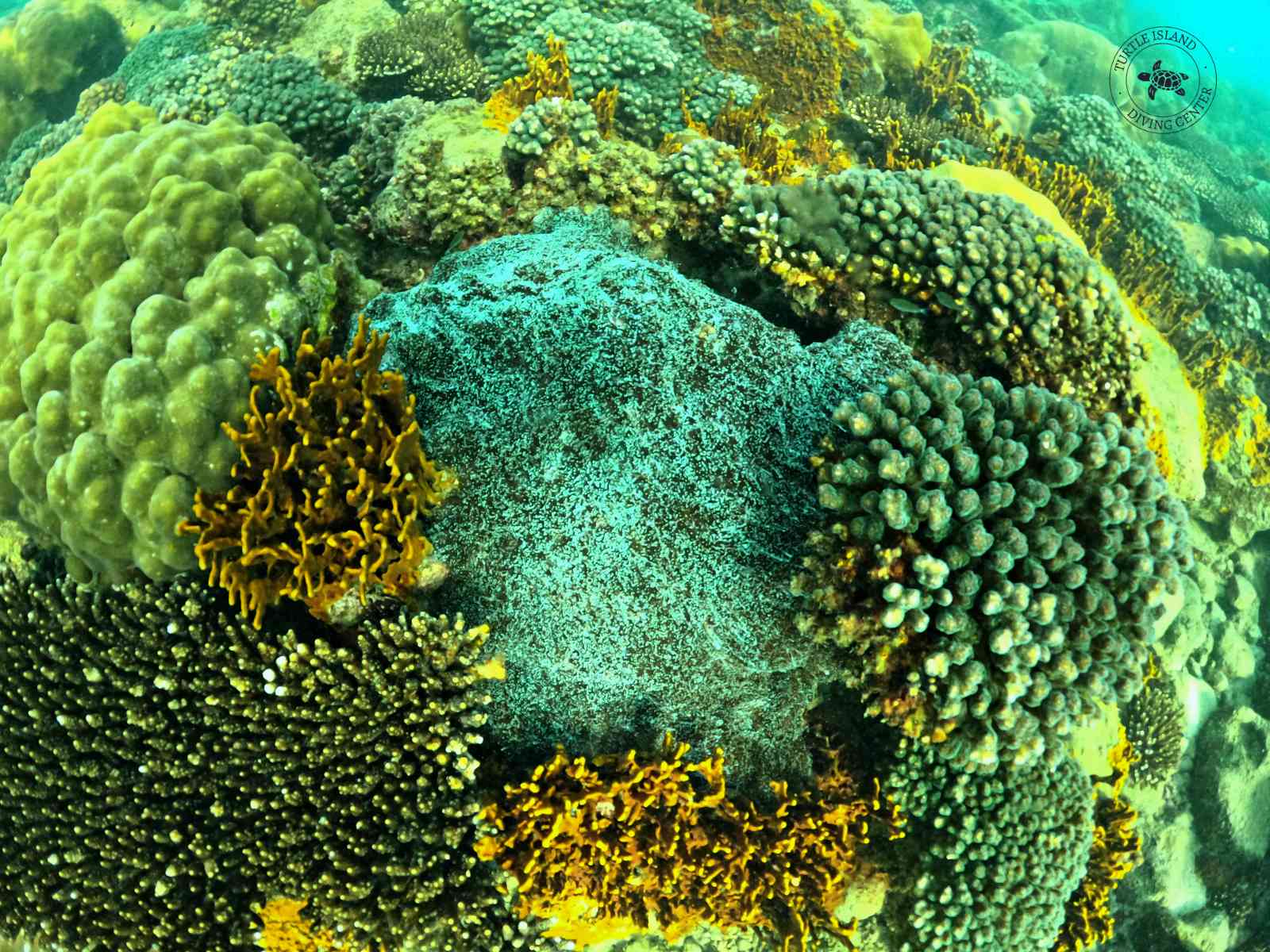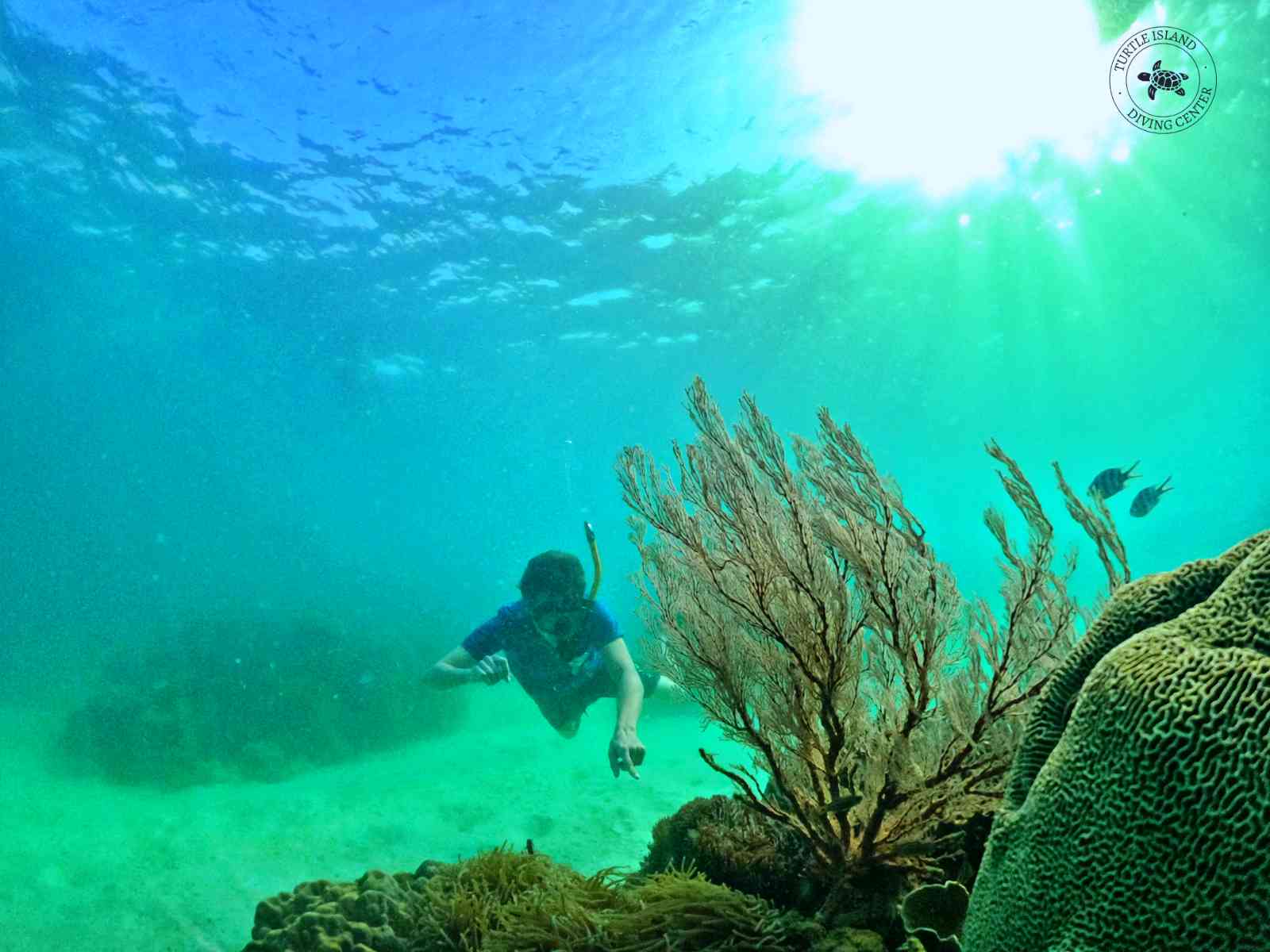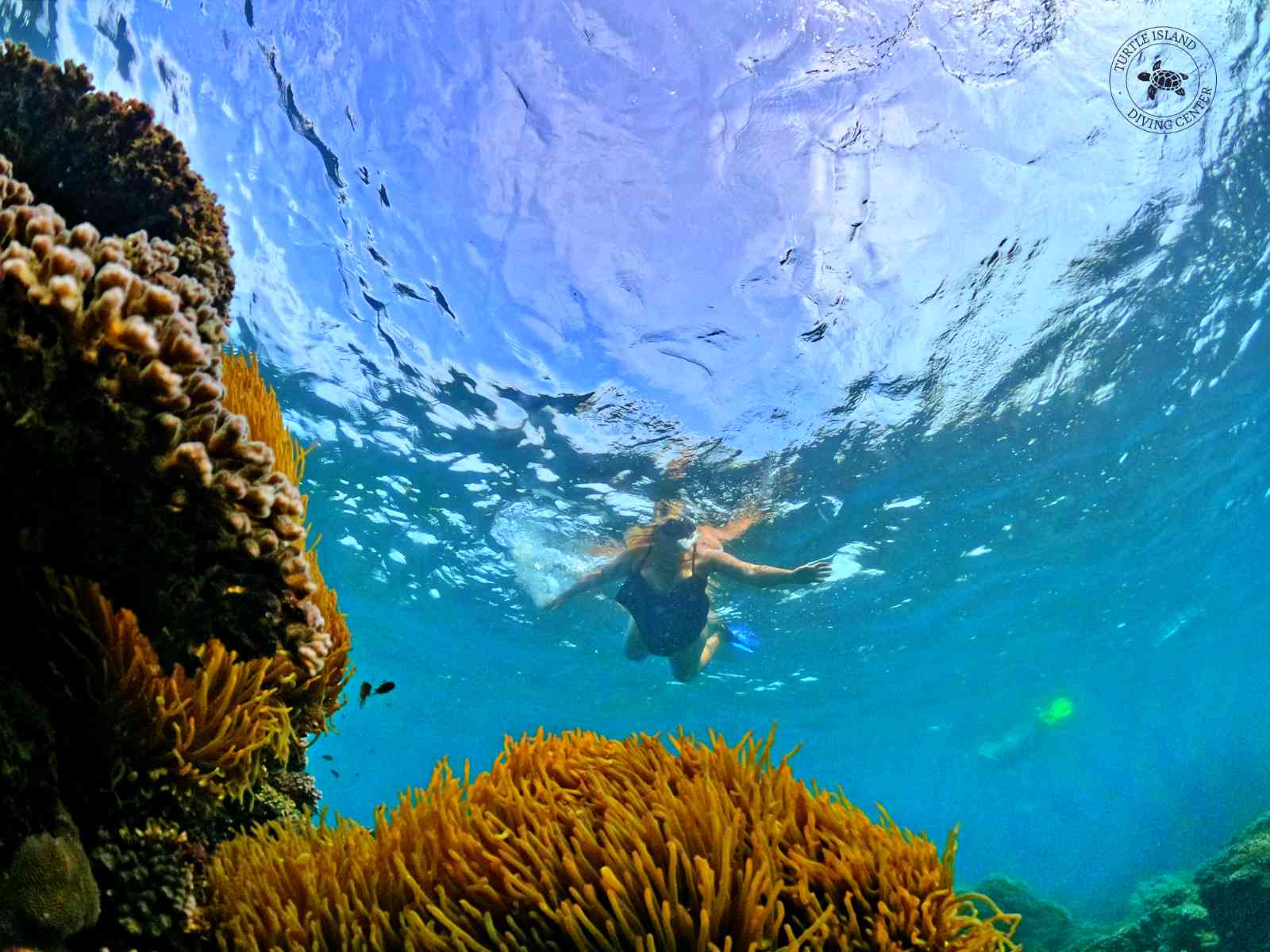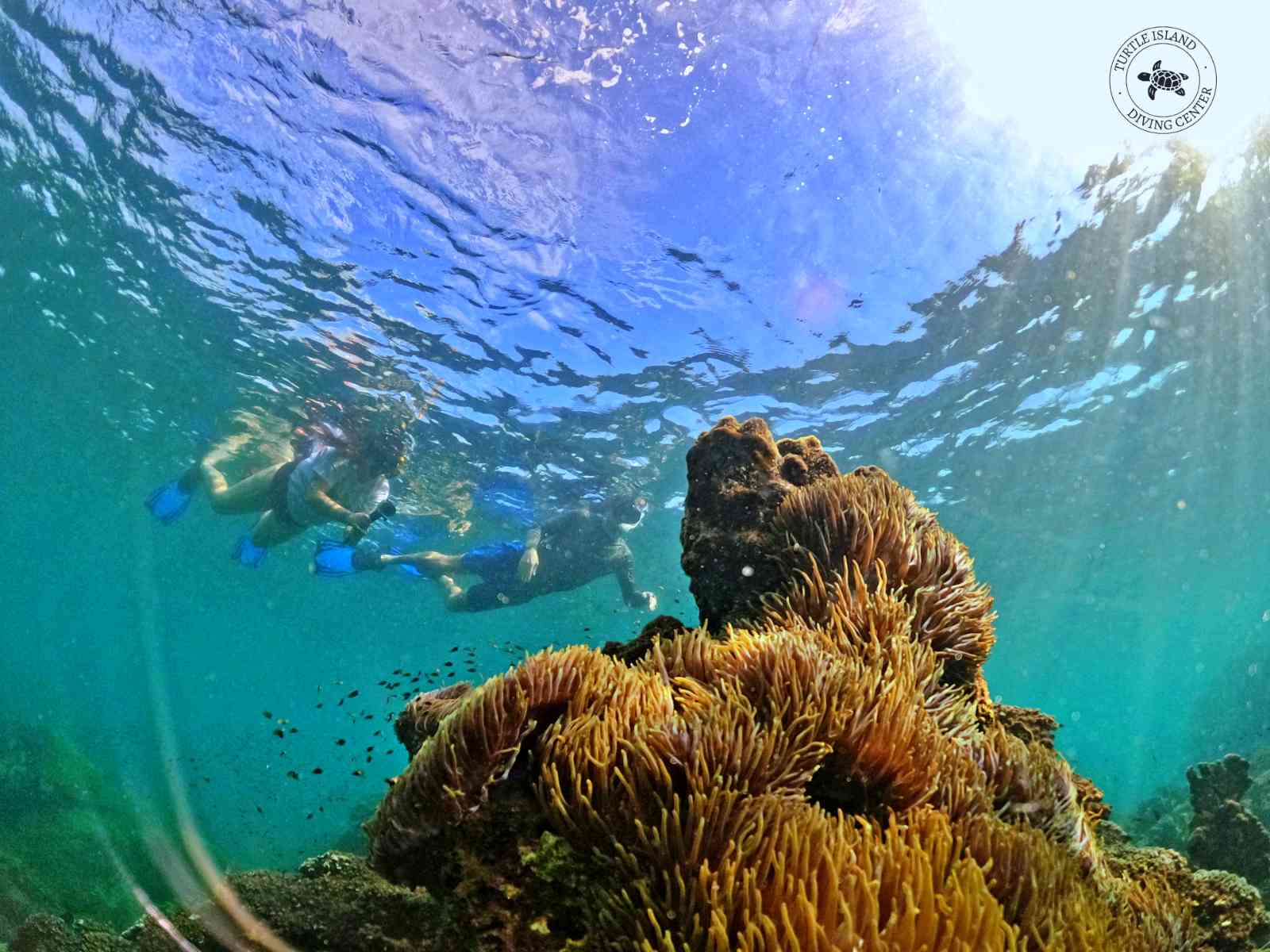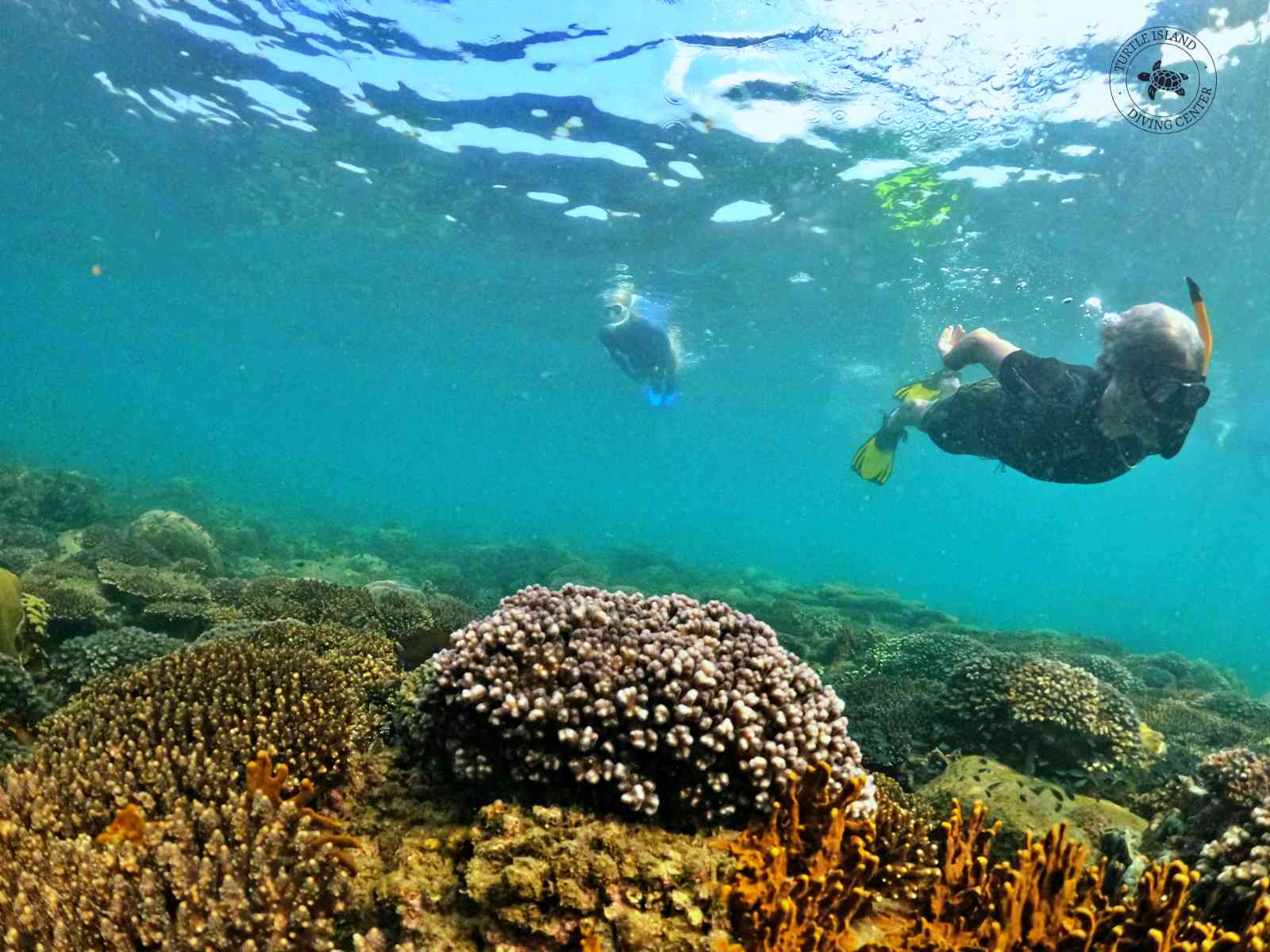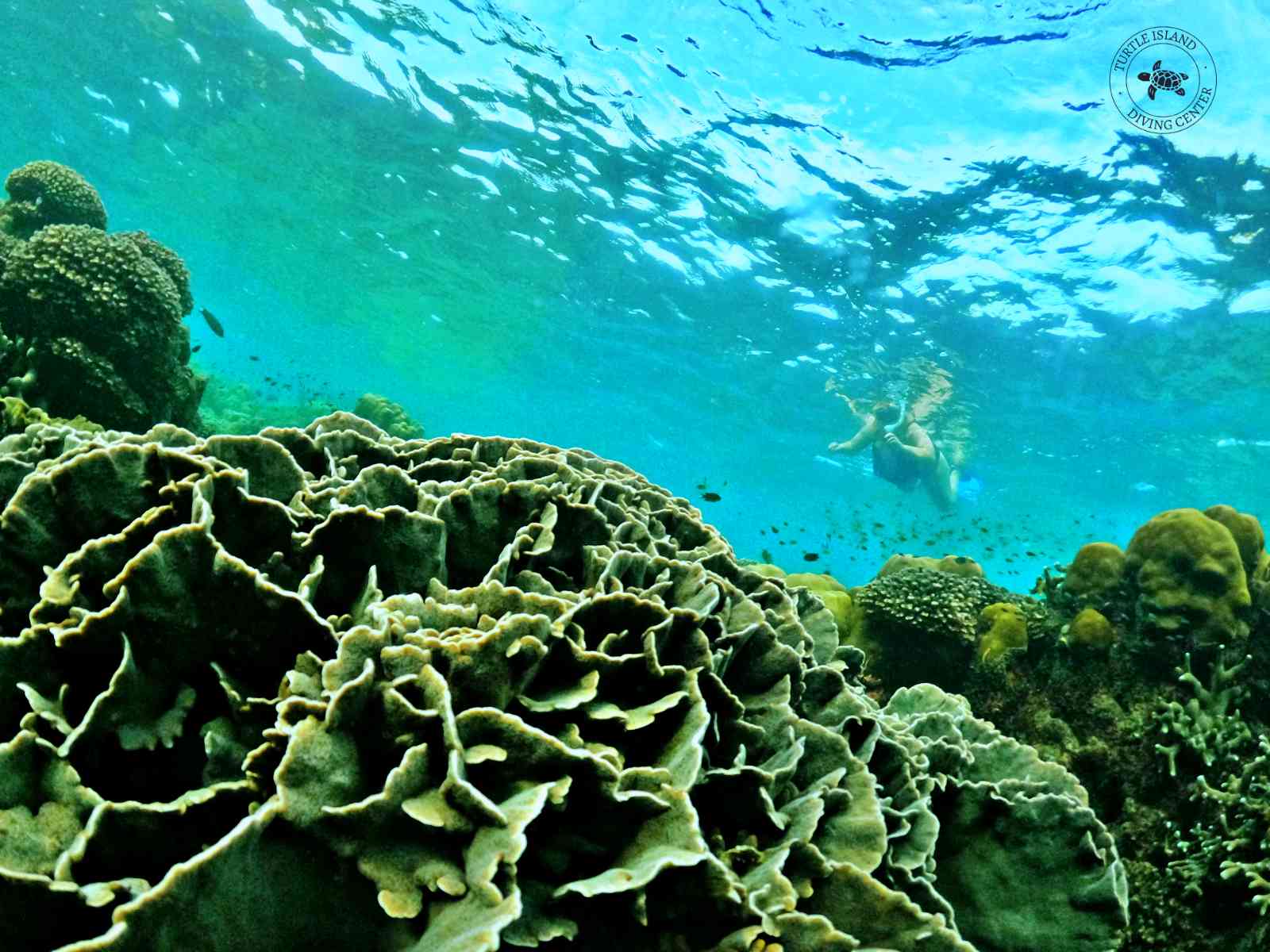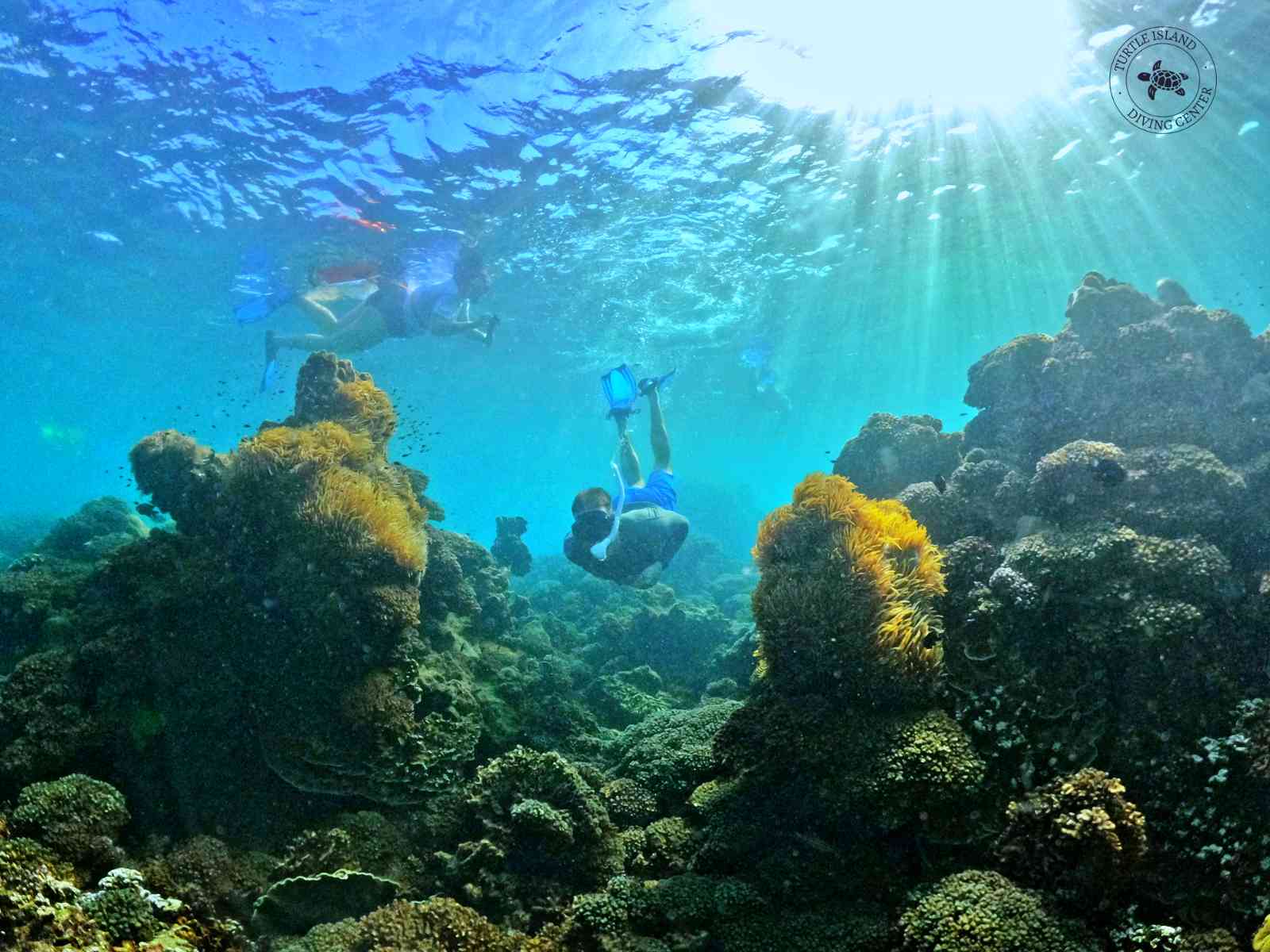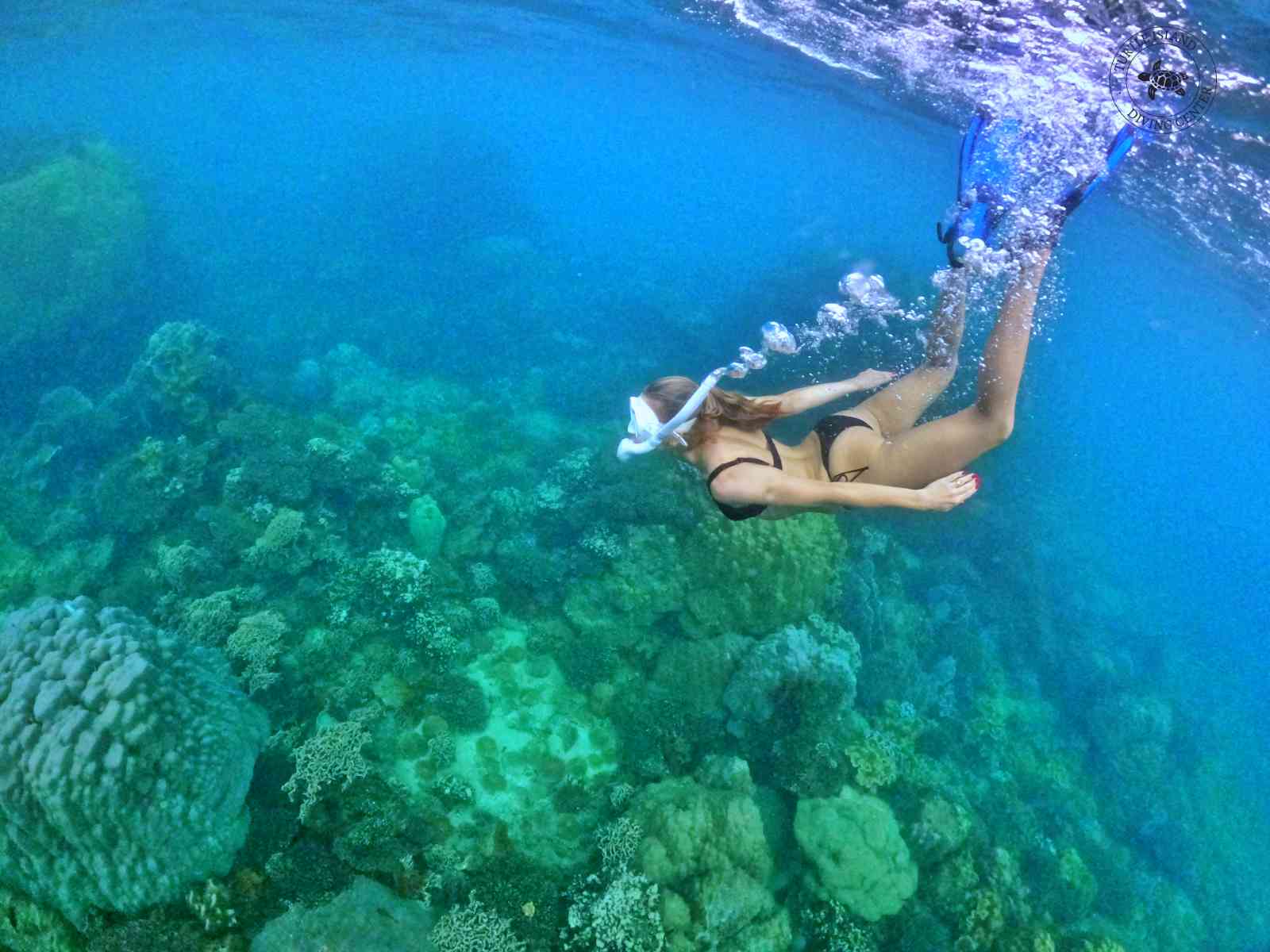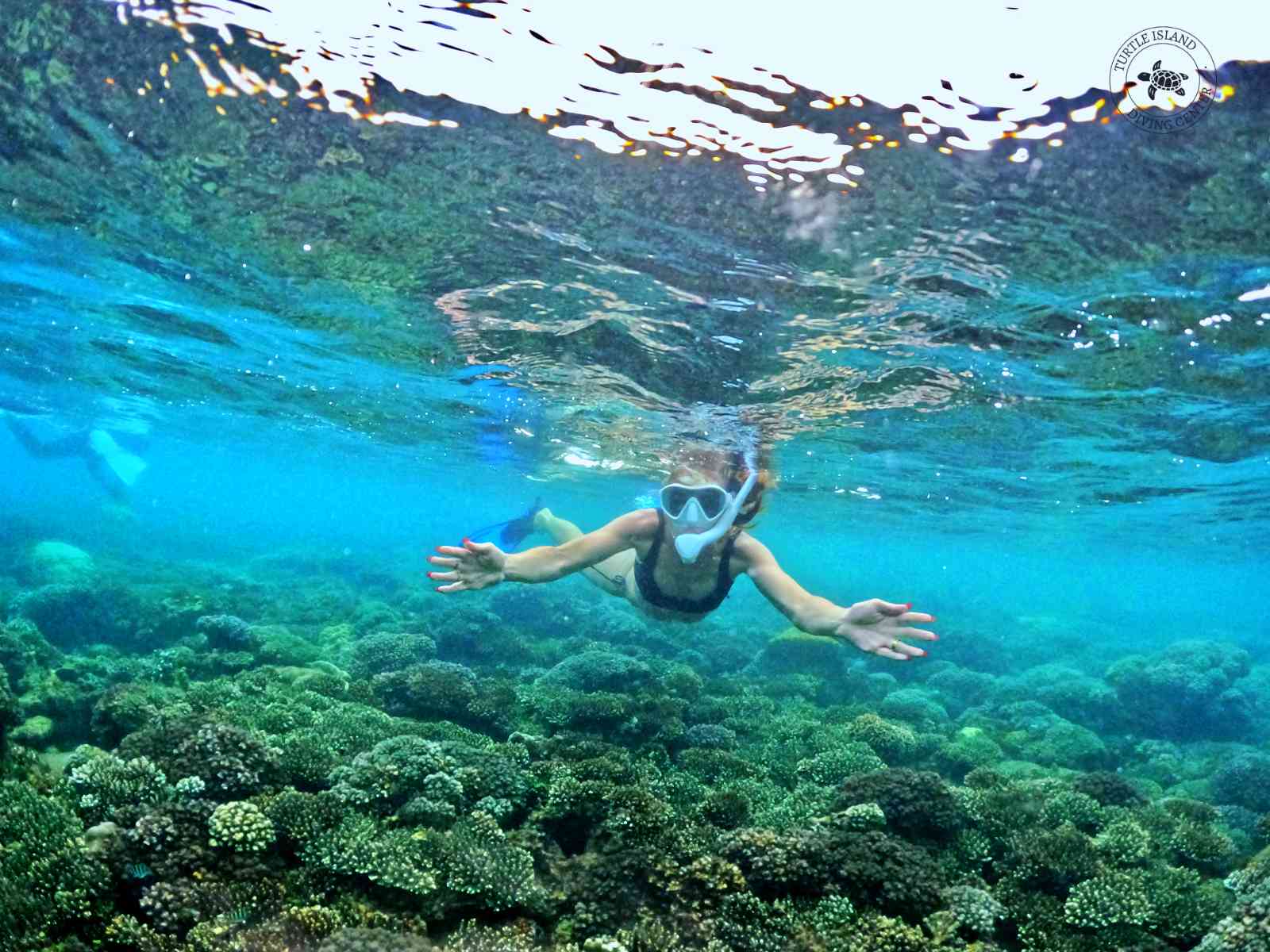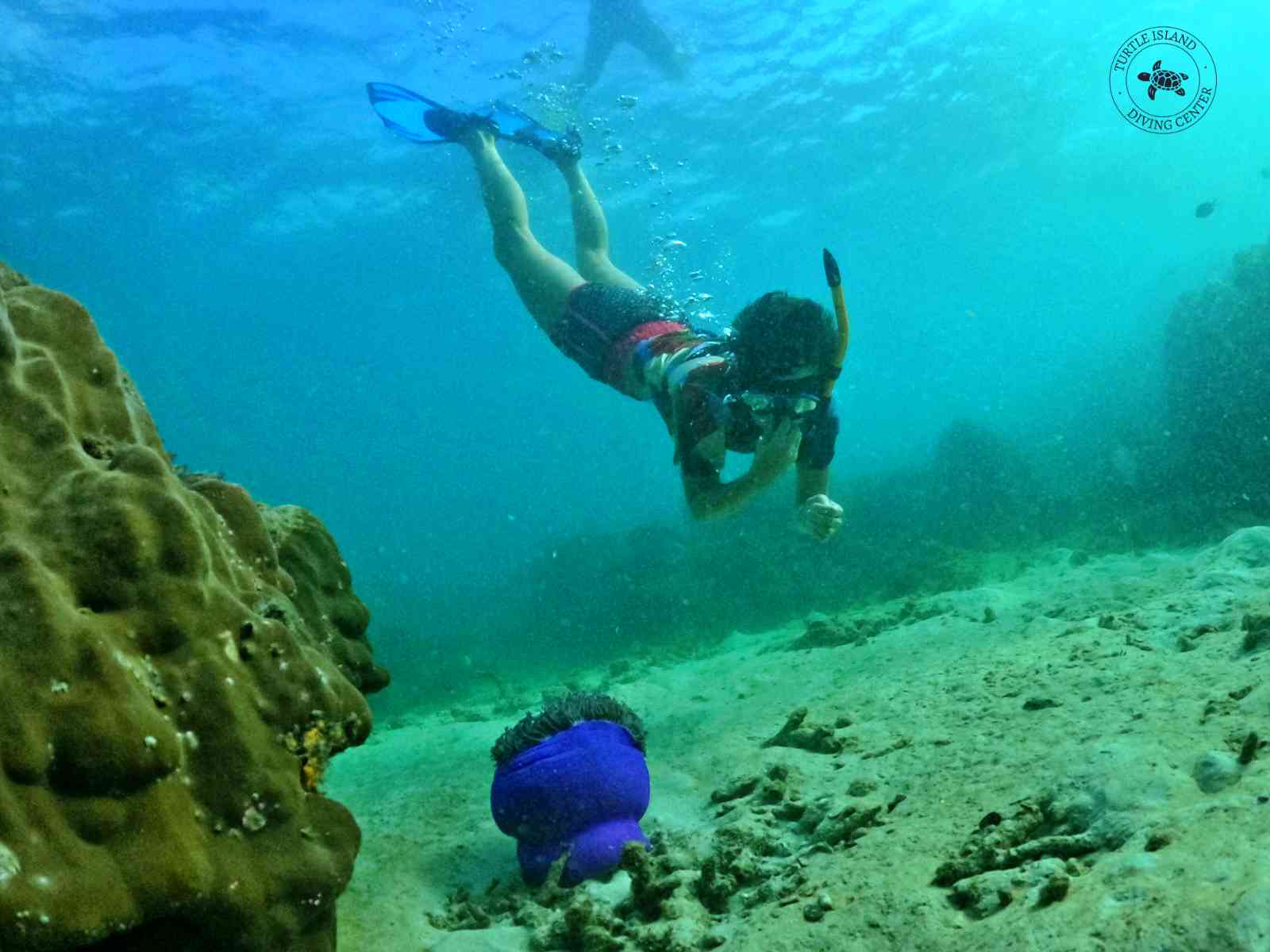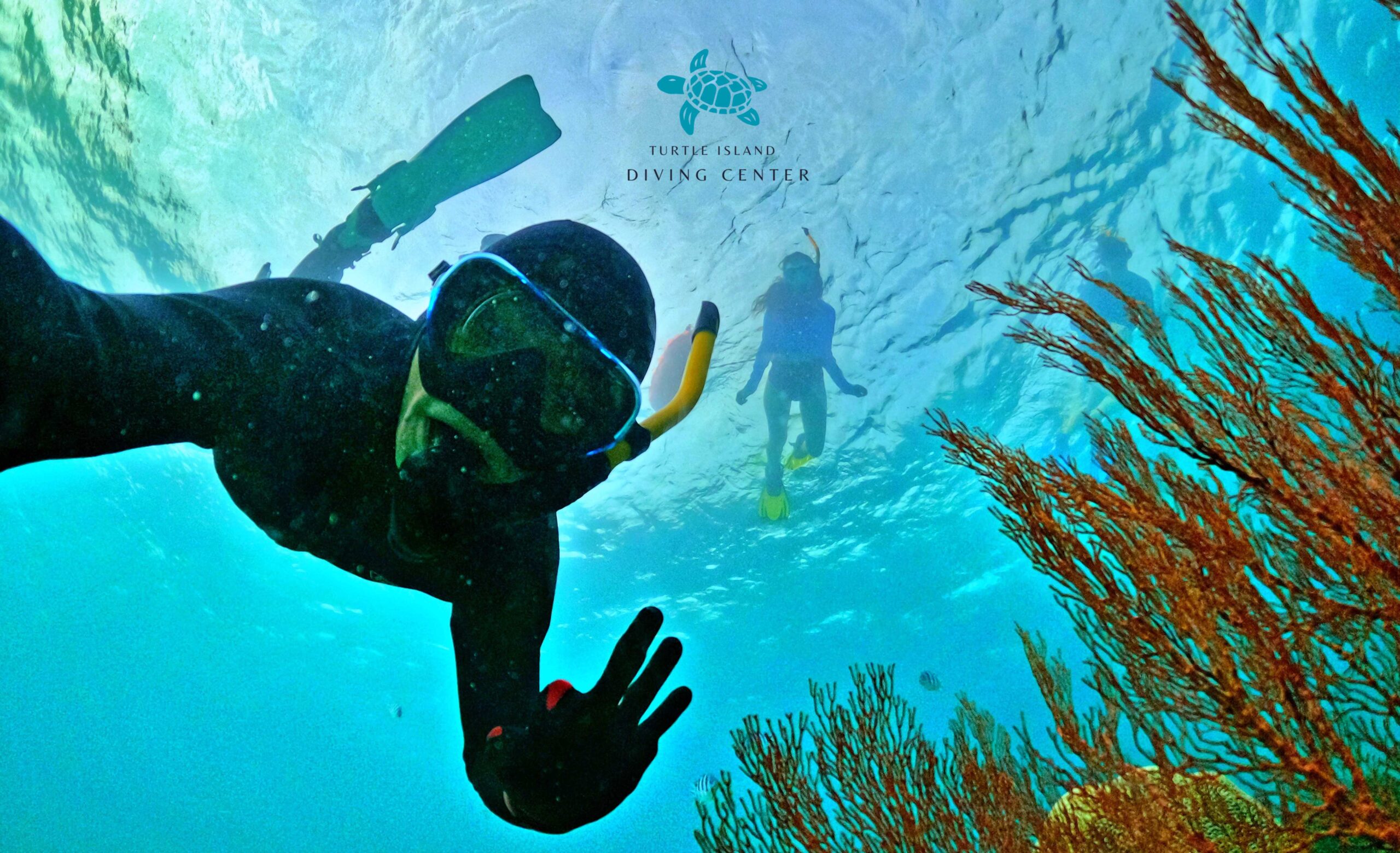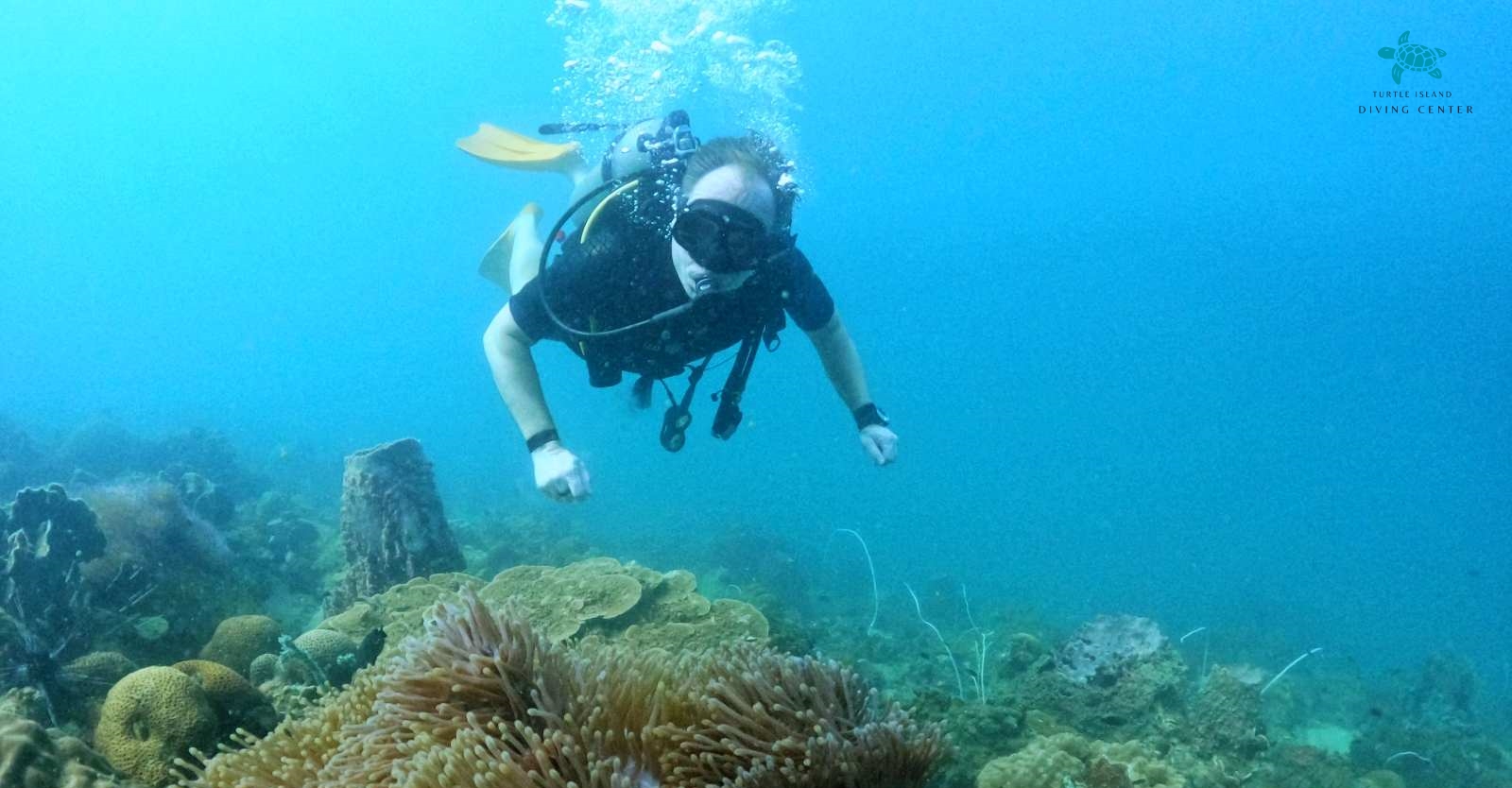Hon Doi Moi (Hawksbill Island)
Table of Contents
Doi Moi Island and Hawksbill Island (Turtle Island) in Phu Quoc, Vietnam
Doi Moi or Hòn Đồi Mồi has long been mistakenly called Turtle Island for a long time due to misunderstanding and mistranslation by the locals, the exact name in English is Hawksbill Island. The island is considered one of the smallest islands among 18 small islands and islets around Phu Quoc based on area of 2.500 m2, due to the geographical location and water condition which limit a large number of tourists, snorkelers, travelers visiting here yearly like the situation happend in South Phu Quoc Island, thereby the Doi Moi island or Hawksbill Island still one of the few remaining intact islands of Phu Quoc so far. In the past, around 1990s and 2000s, the water between Phu Quoc (Vietnam) and Cambodia, Hawksbill sea turtles had been seen quite often here and especially Doi Moi island by local fishermen. Doi Moi island or Hawksbill sea Turtle Island has been recognized one of the largest coral reefs among 21 coral reefs found in Phu Quoc Island by Vietnam biologists through measurements and studies in the last 15 years. Biologists has announced Doi Moi island has the highest coverage of corals in Phu Quoc too.
Origin of the name Doi Moi and Hawksbill sea turtle in Phu Quoc
The breeding season of sea turtles in general and Hawksbill sea turtle in particular is during the warmest months of the year, the begins in April and continue through fall or September in Vietnam. Every year, hundred of adult female turtles emerge from the ocean simultaneously to lay their eggs along limited stretches of beaches along Vietnam among that Phu Quoc and Con Dao are two destinations where sea turtles and hawksbill are seen the most. In Phu Quoc, especially North of Phu Quoc Island was seen as home to sea turtles and Hawksbill sea turtles. “Doi Moi” means “Hawksbill Sea Turtle” while Chuong Vic is a combination of two words: Chuong means “Nest”, Vic means Green Sea Turtles, Chuong Vic mean “Sea Turtle’s Nest”. These 2 untouched beaches and remote island that usually limited to visit in the summer time (breading season of sea turtle and hawksbill) and tide changes daily provide very ideal nesting habitat for sea turtles. The origin of the names came out from these mass-nesting events found at these locations. However, in the past 10 years the appearance of hawksbill or sea turtles around the Doi Moi island and Phu Quoc has been seen to be in a serious decline due to illiegal fishing and over fishing as well as unsustainable tourism (taking people to the island for party, catch seafood around, damage the coral reefs around). The habitat of sea turtles in Phu Quoc and Doi Moi island (Hawksbill Island) in particular has been seriously threatened.
Unique Features
This amazing island also houses an impressive marine life ecosystem, underwater around the smallest island of Phu Quoc. This huge and fringing reef system was created by the waves and the currents, this is the location that Hawksbill go to anually in the nesting season, Hawksbill goes to Turtle Island to lay eggs anually.
All electronic devices will be collected and stored in a dry box (25cm high, 15cm diameter) by our tour guide before swimming. Please bring your own dry-box or dry-bag if you have really big cameras, just to make sure! Also, please note that you will carry the camera by yourself if you have a professional and big camera, the same for its tripod.
All electronic devices will be collected and stored in a dry box (25cm high, 15cm diameter) by our tour guide before swimming. Please bring your own dry-box or dry-bag if you have really big cameras, just to make sure! Also, please note that you will carry the camera by yourself if you have a professional and big camera, the same for its tripod.
Discovery & Reef Protection & Restoration
Adventure Tours
-
Scientific Snorkeling
Turtle Island Discovery (Small-Group: Max 8-9 PAX)
1.350.000₫1.280.000₫A true underwater world discovery to visit the most healthiest coral reef of Phu Quoc Island which is a very nice habitat for hawksbill sea turtle. This habitat of sea turtle is covered fully by corals up to 82.5% total area. -
Diving Courses
OPEN WATER DIVER
9.800.000₫This course is designed to expand your scuba skills and build your confidence through five Adventure Dives, allowing you to explore and try out different specialties under the guidance of your PADI instructor.
The course involves two compulsory Adventure Dives: Deep and Navigation, plus three additional Adventure Dives of your choosing, such as Digital Underwater Photography, Drift Dive, Peak Performance Buoyancy, Multilevel and Computer, Search and Recovery, Underwater Naturalist, and more.
Upon completion of the course, you’ll be certified to dive up to 30 meters, giving you the freedom to explore even more areas of a dive site.
-
Diving Courses
Advanced Scuba Diving
9.000.000₫This course is designed to expand your scuba skills and build your confidence through five Adventure Dives, allowing you to explore and try out different specialties under the guidance of your PADI instructor.
The course involves two compulsory Adventure Dives: Deep and Navigation, plus three additional Adventure Dives of your choosing, such as Digital Underwater Photography, Drift Dive, Peak Performance Buoyancy, Multilevel and Computer, Search and Recovery, Underwater Naturalist, and more.
Upon completion of the course, you’ll be certified to dive up to 30 meters, giving you the freedom to explore even more areas of a dive site.
Media interests
The journey to find Son Doong in Vietnam- the largest natural cave in the world started in 1994, when the expedition team had explored Hang En and Hang Thung, and realised there must be a cave in between. At that time, they had no idea what the cave would be like. Mr Hồ Khanh is a local man, born and raised in Son Trach Commune (now Phong Nha Town), Bo Trach District, Quang Binh Province, Vietnam. Since he was a teenager, Ho Khanh was a lumberjack, spending weeks in the jungle logging and poaching for very little income. In 1990, on a trip to the woods, while looking for agarwood (a very expensive plant), he encountered a thunderstorm and had to find a shelter, finding a small cave entrance below a cliff. As he approached, Ho Khanh saw mist blowing out and heard the sounds of a roaring river inside.
When he felt the strong cold wind blowing out, he decided to return without any further inspection. As time passed, he thought that cave was similar to many others found on his jungle trips, so he did not bother to remember the exact location.
In 2007, Mr Howard Limbert and Ms Deb Limbert – leading the members of The British Vietnam Cave Expedition Team came to Phong Nha and did some research and surveys of caves in the area. Based on the analysis of limestone topography, river systems and faultlines., Howard predicted that there was a very large cave after the exit of Hang En but he did not know the exact location of the cave. In a talk with Howard, Mr Ho Khanh coincidently mentioned the cave entrance that he accidentally saw with strong winds, dense fog and the loud sound of a roaring river echoing coming from the cave. Howard and Deb were very excited and urged Ho Khanh to try to remember the location and the way to where this cave is located.
Admiring the enthusiasm of Mr Howard and his team members, Ho Khanh diligently searched for the mysterious cave many years later. Supposed to be forgotten, in 2008, on another trip to the wood, Ho Khanh was lucky to find the location of the cave entrance. He carefully memorised the location and map the route to get to the cave entrance in his mind by orienting the mountains and trees. When he returned, he then tried to find a way to contact the expedition team.
On April 07, 2009, Howard Limbert led a caving expert team in collaboration with the Geography Department of Hanoi University of Science to survey the cave. The first person stepping inside Son Doong was Peter MacNab, a member of The British Vietnam Cave Expedition Team. This was also the first time Ho Khanh went inside the cave. During this expedition, they determined that this is the world’s biggest cave, in Vietnam with its own ecosystem. Ho Khanh and the cave expert team discussed and decided to call the cave Son Doong (A combination of 2 words: Son means mountain, Doong is the name of the valley where the Bru-Van Kieu ethnic minority people have lived since 1992 and it is where Thuong River comes from). Since then Son Doong Cave has become known around the world and has become a famous cave in Vietnam.
FAQS
All electronic devices will be collected and stored in a dry box (25cm high, 15cm diameter) by our tour guide before swimming. Please bring your own dry-box or dry-bag if you have really big cameras, just to make sure! Also, please note that you will carry the camera by yourself if you have a professional and big camera, the same for its tripod.
All electronic devices will be collected and stored in a dry box (25cm high, 15cm diameter) by our tour guide before swimming. Please bring your own dry-box or dry-bag if you have really big cameras, just to make sure! Also, please note that you will carry the camera by yourself if you have a professional and big camera, the same for its tripod.
All electronic devices will be collected and stored in a dry box (25cm high, 15cm diameter) by our tour guide before swimming. Please bring your own dry-box or dry-bag if you have really big cameras, just to make sure! Also, please note that you will carry the camera by yourself if you have a professional and big camera, the same for its tripod.
All electronic devices will be collected and stored in a dry box (25cm high, 15cm diameter) by our tour guide before swimming. Please bring your own dry-box or dry-bag if you have really big cameras, just to make sure! Also, please note that you will carry the camera by yourself if you have a professional and big camera, the same for its tripod.
All electronic devices will be collected and stored in a dry box (25cm high, 15cm diameter) by our tour guide before swimming. Please bring your own dry-box or dry-bag if you have really big cameras, just to make sure! Also, please note that you will carry the camera by yourself if you have a professional and big camera, the same for its tripod.
All electronic devices will be collected and stored in a dry box (25cm high, 15cm diameter) by our tour guide before swimming. Please bring your own dry-box or dry-bag if you have really big cameras, just to make sure! Also, please note that you will carry the camera by yourself if you have a professional and big camera, the same for its tripod.
All electronic devices will be collected and stored in a dry box (25cm high, 15cm diameter) by our tour guide before swimming. Please bring your own dry-box or dry-bag if you have really big cameras, just to make sure! Also, please note that you will carry the camera by yourself if you have a professional and big camera, the same for its tripod.
All electronic devices will be collected and stored in a dry box (25cm high, 15cm diameter) by our tour guide before swimming. Please bring your own dry-box or dry-bag if you have really big cameras, just to make sure! Also, please note that you will carry the camera by yourself if you have a professional and big camera, the same for its tripod.
All electronic devices will be collected and stored in a dry box (25cm high, 15cm diameter) by our tour guide before swimming. Please bring your own dry-box or dry-bag if you have really big cameras, just to make sure! Also, please note that you will carry the camera by yourself if you have a professional and big camera, the same for its tripod.
